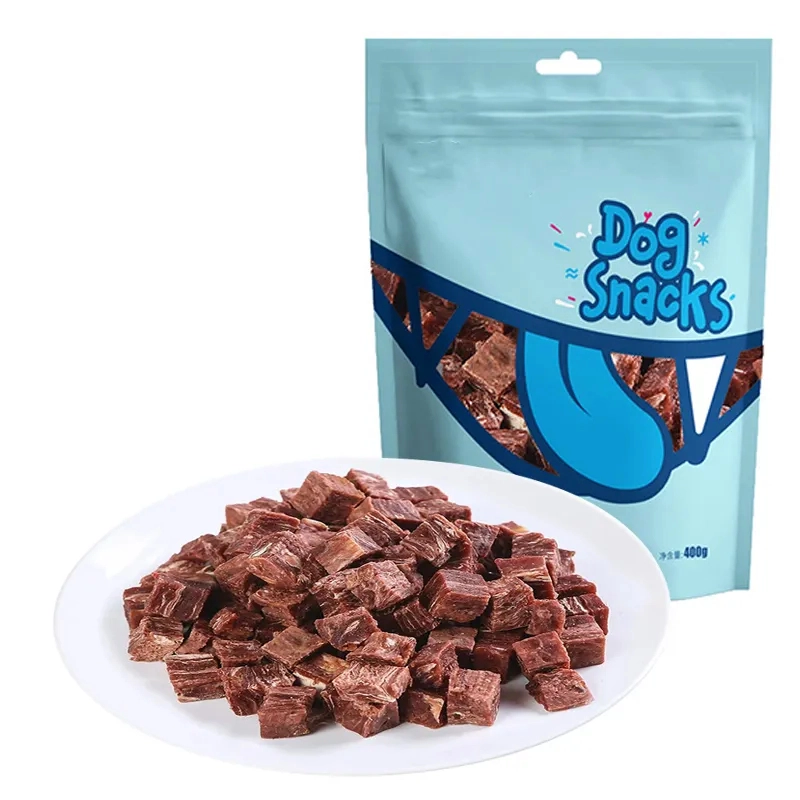Rawhide: Good or Bad for Your Dog? pet treats
Rawhide chews are a popular treat for dogs. You might have heard that rawhide is good for your dog’s teeth and helps with their natural instinct to chew. But are there any drawbacks to giving your dog rawhide treats? Are there other alternatives that work just as well? Here’s what you need to know.
1. What are rawhide dog treats made of?
Rawhide treats come from the inner layer of cow or horse hides. During manufacturing, the hides are cleaned and cut or ground. Then they’re pressed into chewable dog treats of different shapes and sizes. To make them more appealing for dogs, some rawhide treats contain beef, chicken, or liver flavorings.
2. What are the benefits of rawhide?
All dogs need to chew. It’s a natural instinct. Some even spend hours chewing every day. Chewing can provide your dog stimulation and help relieve anxiety. Especially with puppies, treats like rawhide bones can be a great substitute for your leather shoes and the legs of the dining room table!
Chewing also keeps dogs’ jaws strong, teeth clean, and breath a bit fresher. Dogs that chew regularly on rawhides and other bones or toys have less plaque and tartar build-up on teeth.
3. Are there risks associated with rawhide dog treats?
Given the amount of rawhide consumed by dogs each year, the risks are relatively small. Still, risks can be serious, so don’t ignore them. Weigh the risks and benefits of giving rawhides based upon your dog's chewing needs and behaviors.
These are the most common rawhide risks:
- Contamination. As with pet toys, rawhide chews can contain trace amounts of toxic chemicals. And, as with other pet (or human) foods, Salmonella or E. coli contamination is possible. Even humans can be at risk when coming into contact with these bacteria on rawhide treats.
- Digestive irritation. Some dogs are simply sensitive or allergic to rawhide or other substances used in their manufacture. This can cause problems, including diarrhea.
- Choking or blockages. Rawhide bones and other edible chews can pose a choking and blockage risk. In fact, this is a much bigger risk than contamination or digestive irritation. If your dog swallows large pieces of rawhide, the rawhide can get stuck in the esophagus or other parts of the digestive tract. Depending on its size and where it is located, a vet may be able to remove these pieces fairly easily through the throat with a procedure known as an endoscopy. But sometimes, abdominal surgery is needed to remove them from the stomach or intestines. If it isn’t resolved, a blockage can lead to death.
4. How can I make rawhide chews safer for my dog?
If you decide to offer your dog rawhide, you can take certain precautions to make them safer. To minimize your risk of exposure to contaminants, wash your hands thoroughly after handling these treats. Have young children and family members with immune system problems avoid handling them at all.
To protect your dog:
- Ask your vet about how much is safe to give your dog. The general rule is the smaller the dog, the fewer the chews. Especially at first, give one at a time. Then wait a day to see how your dog’s intestinal system responds.
- Separate your dog from other pets so they can relax while chewing. This way, your dog will be less likely to gulp large pieces whole. Doing this might be especially important if you have a dog that is very territorial around food.
- Offer different types of rawhide, but only when you can supervise and see how your dog is handling the treat. Are they swallowing big bites? Are they starting to gag or choke? If so, take the treat away and check with your vet about other types of rawhide or other types of chew treats or toys.
- Take the rawhide chew away from your dog once it is small enough to swallow whole. If it is hard to get your dog to give up the rawhide chew, try asking them to sit and then offer another type of treat.
Watch for signs of bacterial contamination, gastric irritation, or a blockage. Contact your veterinarian if your dog has signs such as:
- Gagging
- Regurgitation
- Repeated swallowing
- Vomiting
- Diarrhea, with or without blood
- Fever
- Lack of energy
- Signs of pain
- Refusal to eat or weight loss
- Straining when pooping, or being unable to poop
5. Should certain dogs avoid rawhide treats?
Does your dog have a history of diarrhea or other digestive troubles after chewing on rawhide treats? Or does your dog tend to swallow big chunks of rawhide, putting them at risk for a blockage? If so, try alternatives for keeping teeth clean and satisfying your dog’s urge to chew.
Talk with your veterinarian or pet store merchant. Describe your pet’s size, personality, and needs to figure out what might work best. Sometimes a hard rubber chew works well. Some types can be filled with food such as peanut butter to get your dog interested and keep them occupied.
Whether or not your dog has problems with rawhide chews, you might want to try a variety of chewing treats and toys, including rawhide, natural marrow bones, and hard rubber toys to fully satisfy your dog’s chewing and other needs.








